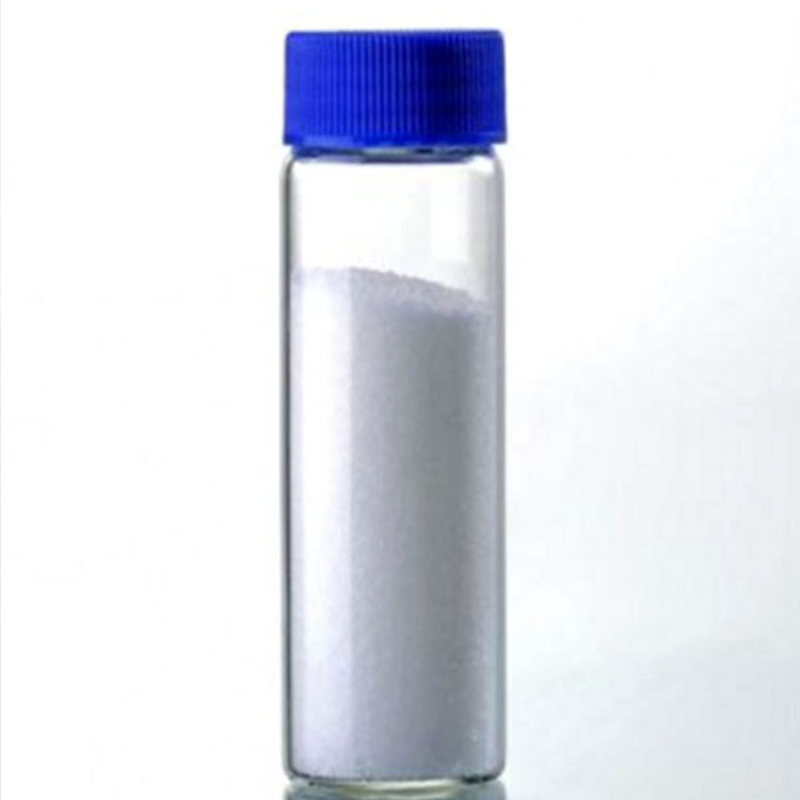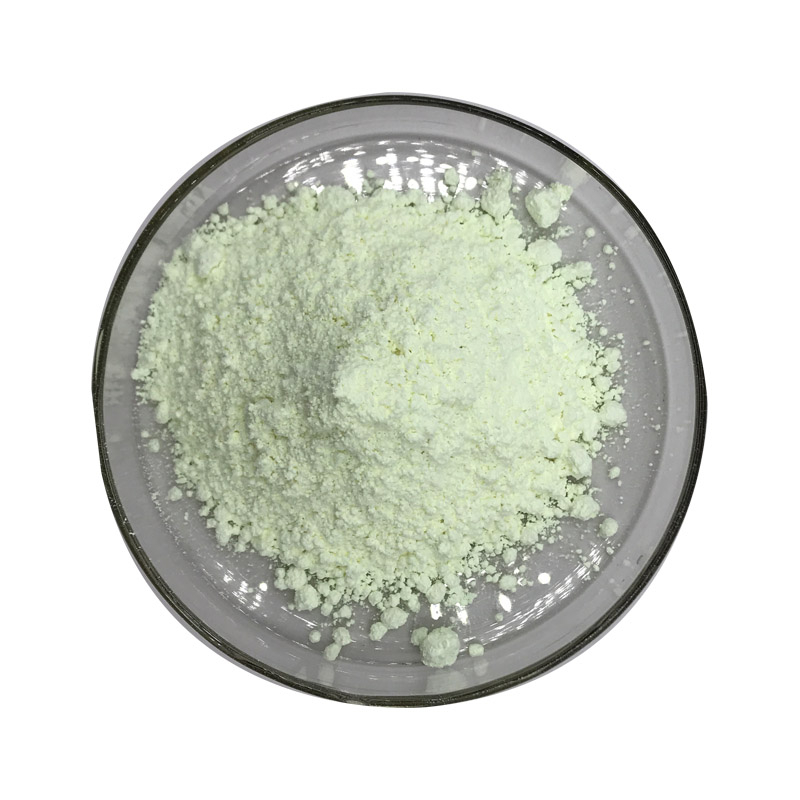Products Description of 1,3-bis(3-glycidoxypropyl)tetramethyldisiloxane CAS#126-80-7Colorless liquid1,3-bis(3-glycidoxypropyl)tetramethyldisiloxane Chemical PropertiesMelting point <0°CBoiling point 184 °C2 mm Hg(lit.)density 0.996 g/mL at 20 °C(lit.)refractive index n20/D 1.452Fp 110°CSpecific Gravity0.996Hydrolytic Sensitivity3: reacts with aqueous baseBRN 223966InChIInChI=1S/C16H34O5Si2/c1-22(2,9-5-7-17-11-15-13-19-15)21-23(3,4)10-6-8-18-12-16-14-20-16/h15-16H,5-14H2,1-4H3InChIKeyMFIBZDZRPYQXOM-UHFFFAOYSA-NSMILES[Si](C)(C)(
Contact Now
Products Description of 1,3-Propanediol CAS#504-63-21,3-Propanediol (PDO) is mainly used to produce a new type of polyester, polytrimethylene terephthalate (PTT).
Contact Now
Products Description of Tributyl phosphate CAS#126-73-8Colorless, transparent liquid with pungent odor, flash point 193℃, boiling point 289℃ (101KPa), viscosity 3.5~12.2 centipoise, refractive index 1.4226 (20℃). It is miscible with common organic solvents and slightly soluble in water. The solubility of water in this product is 7% (25℃). But it will gradually hydrolyze as the temperature rises.
Contact Now
Products Description of 1,3-Butanediol CAS#107-88-0Transparent colorless hygroscopic viscous liquid with a weak special taste. Almost odorless. Boiling point 207.5℃, relative density (4:1.0059, refractive index (nD20) 1.4401, freezing point <-50℃, flash point 121.1℃. Has a certain antibacterial effect.
Contact Now
Products Description of Sulfolane 99.5% CAS#126-33-0Sulfolane solvent has high solubility for aromatics, good selectivity, good thermal stability, low vapor pressure, low toxicity and no corrosion to carbon steel.
Contact Now
Products Description of OBSH CAS#80-51-34,4'-Oxobenzenesulfonylhydrazide, also known as bis(benzenesulfonylhydrazide) ether, is an organic compound with the chemical formula C12H14N4O5S2.
Contact Now
Products Description of Tris(hydroxymethyl)nitromethane CAS#126-11-4Chemical, crystallizes into white crystals in a mixture of ethyl acetate and benzene.
Contact Now
Products Description of Sulfolane CAS#126-33-0Sulfolane solvent has high solubility for aromatic hydrocarbons, good selectivity, good thermal stability, low vapor pressure, low toxicity and no corrosion to carbon steel. Therefore, sulfolane extraction technology has become the most widely used aromatic hydrocarbon in the world.
Contact Now
Products Description of Bisphenol A CAS#80-05-7Bisphenol A (BPA), scientifically known as 4,4'-Isopropylidenediphenol, is a white crystalline solid that is combustible and has a faint phenolic odor. It is characterized by a relative density of 1.195, a melting point ranging from 155 to 158°C, and a boiling point between 250 to 252°C, with a flash point at 79.4°C.
Contact Now
Products Description of Dibenzoylmethane CAS#120-46-71,3-diphenyl-1,3-propanedione is commonly known as dibenzoylmethane.
Contact Now
(2-hydroxytrimethylene)bis(trimethylammonium) dichloride Chemical PropertiesMelting point 256-257 °C (decomp)Factory and Equipment ShowFast delivery timeInventory 2-3 working days New production 7-10 working days
Contact Now
Products Description of 4,4'-Diaminodiphenylsulfone CAS#80-08-0Dapsone is a sulfone antibacterial drug with a strong antibacterial effect on Mycobacterium leprae. Its preparations have been widely used in the treatment of leprosy. As the first choice for the treatment of leprosy, dapsone acts on the dihydrofolate synthase (DHPs) of bacteria, interferes with the synthesis of folic acid, and affects the synthesis of protein by bacteria.
Contact Now
Products Description of 1,4-Bis-[4-(3-acryloyloxypropyloxy)benzoyloxy]-2-methylbenzeneCAS#174063-87-71,4-Bis-[4-(3-acryloxypropoxy)benzoyloxy]-2-methylbenzene can be used in the field of photography to synthesize fast-erasable dyes, filter materials, charge transfer agents, etc.1,4-Bis-[4-(3-acryloyloxypropyloxy)benzoyloxy]-2-methylbenzene Chemical PropertiesBoiling point 733.5±60.0 °C(Predicted)density 1.219vapor pressure 0.003Pa at 25℃storage temp. Keep in dark place,Sealed in dry,Room Temperatureform powdercolor WhiteWater Solubility 5.3μg/L at 20℃Log
Contact Now
Products Description of 2,4-Bis(phenylsulfonyl)phenol CAS#177325-75-6White powder2,4-Bis(phenylsulfonyl)phenol Chemical PropertiesMelting point 158 °CBoiling point 631.4±50.0 °C(Predicted)density 1.415±0.06 g/cm3(Predicted)pka4.17±0.43(Predicted)form powder to crystalcolor White to Almost whiteCAS DataBase Reference177325-75-6Factory and Equipment ShowFast delivery timeInventory 2-3 working days New production 7-10 working days
Contact Now
Products Description of (Z)-N-9-octadecenylpropane-1,3-diamineCAS#7173-62-8Colorless liquid(Z)-N-9-octadecenylpropane-1,3-diamine Chemical PropertiesBoiling point 435.6±28.0 °C(Predicted)density 0.851±0.06 g/cm3(Predicted)vapor pressure 0.002Pa at 20℃pka10.67±0.19(Predicted)Water Solubility 36mg/L at 23℃LogP0EPA Substance Registry SystemN-Oleyl-1,3-propanediamine (7173-62-8)Factory and Equipment ShowFast delivery timeInventory 2-3 working days New production 7-10 working days
Contact Now
Products Description of 1,3-Dioxan-2-one CAS#2453-03-4Used to synthesize polytrimethylene carbonate (PTMC)1,3-Dioxan-2-one Chemical PropertiesMelting point 45.0 to 49.0 °CBoiling point 135°C/4mmHg(lit.)density 1.200±0.06 g/cm3(Predicted)storage temp. under inert gas (nitrogen or Argon) at 2-8°Csolubility soluble in Methanolform powder to crystalcolor White to Almost whiteSafety InformationRisk Statements 22-36Safety Statements 24/25HS Code 29147000Factory and Equipment ShowFast delivery timeInventory 2-3 working days New production 7-10 wo
Contact Now
Products Description of Cobalt bis(2-ethylhexanoate)CAS#136-52-7Purple liquid.Cobalt bis(2-ethylhexanoate) Chemical Propertiesdensity 1.002 g/mL at 25 °Cvapor pressure 5Pa at 25℃Fp 104 °Fform liquidcolor purpleWater Solubility 40.3g/L at 20℃CAS DataBase Reference136-52-7(CAS DataBase Reference)EPA Substance Registry SystemHexanoic acid, 2-ethyl-, cobalt(2+) salt (136-52-7)Safety InformationHazard Codes Xn,NRisk Statements 10-36/37/38-40-43-66-65-62-50/53Safety Statements 26-36/37-62-61RIDADR UN 1268 3/PG 3WGK Germany&nb
Contact Now
Products Description of Bis(2-ethylhexyl) phosphate CAS#298-07-7 Di(2-ethylhexyl) phosphate is a chemical substance. It is a viscous oily liquid with strong acidity.
Contact Now
Products Description of Diammonium 2,2'-azino-bis(3-ethylbenzothiazoline-6-sulfonate)CAS#30931-67-0ABTS diammonium salt is a substrate for horseradish peroxidase (HRP).Diammonium 2,2'-azino-bis(3-ethylbenzothiazoline-6-sulfonate) Chemical PropertiesMelting point >181oC (dec.)storage temp. 2-8°Csolubility H2O: 50 mg/mL, very slightly hazy, greenform tabletcolor Pale Green to Light GreenPHpH(50g/l, 25℃) : 5.0~6.0Water Solubility Dissolve in water at 50mg/ml.
Contact Now
Zirconium, chloro glycine hydroxy aluminum complexes CAS#90604-80-1Factory and Equipment ShowFast delivery timeInventory 2-3 working days New production 7-10 working days
Contact Now
Products Description of 1,3-Dichloroisoquinoline CAS#7742-73-61,3-Dichloroisoquinoline is a white to brown crystalline powder.1,3-Dichloroisoquinoline Chemical PropertiesMelting point 121-122 °C (lit.)Boiling point 307°C(lit.)density 1.407±0.06 g/cm3(Predicted)storage temp. Inert atmosphere,Room Temperatureform powder to crystalpka-1.49±0.50(Predicted)color Light yellow to Brown to Dark greenCAS DataBase Reference7742-73-6(CAS DataBase Reference)Safety InformationHazard Codes XiRisk Statements 36/37/38Safety Statements 26-36WGK Germany 3HS
Contact Now
Cyclohexanol, 4,4-(1-methylethylidene)bis-, polymer with (chloromethyl)oxirane CAS#30583-72-3Hydrogenated bisphenol A epoxy resin is mainly used in insulating materials.Cyclohexanol, 4,4-(1-methylethylidene)bis-, polymer with (chloromethyl)oxirane Chemical Propertiesdensity 1.135[at 20℃]vapor pressure 0.002Pa at 20℃Water Solubility 58.6mg/L at 30℃InChIInChI=1S/C15H28O2.C3H5ClO/c1-15(2,11-3-7-13(16)8-4-11)12-5-9-14(17)10-6-12;4-1-3-2-5-3/h11-14,16-17H,3-10H2,1-2H3;3H,1-2H2InChIKeyCSSRVVKVKAJYLJ-UHFFFAOYSA-NSMILESC(C1CCC(O)CC1)(C1CCC(O)CC1)(C)C.C(C1OC1)ClLogP3.84 at 20℃EPA Substan
Contact Now
Products Description of 1,3-Dioxan-2-one homopolymer CAS#31852-84-3Polylactic acid is also known as polyhydroxypropionic acid or polylactide. It is a biodegradable polymer material formed by the polycondensation of lactic acid monomers. It is soluble in solvents such as chloroform, acetone, dioxane, dimethylformamide, benzene, toluene, and insoluble in saturated alkanes such as petroleum ether. It has good biocompatibility and blood compatibility, good anticoagulant properties in vitro, can be degraded by the human body, and excreted from the body as carbon dioxide and water.
Contact Now
Products Description of Tetramethylguanidine CAS#80-70-6Tetramethylguanidine, referred to as TMG, is a strong organic base catalyst with a wide range of uses in industry.
Contact Now














![1,4-Bis-[4-(3-acryloyloxypropyloxy)benzoyloxy]-2-methylbenzeneCAS#174063-87-7](https://d3rnfhc14zcmdf.cloudfront.net/cdn/ff/UzaxHqC7dqMBX0gCNrVwnr0zZlxBJGLCf_1pR8RV7U8/1719438243/public/styles/chanpinzhutu/public/2024-06/%E7%99%BD%E8%89%B2%E7%B2%89%E6%9C%AB%20%285%29_15.jpg?itok=9zTdC24L)



















